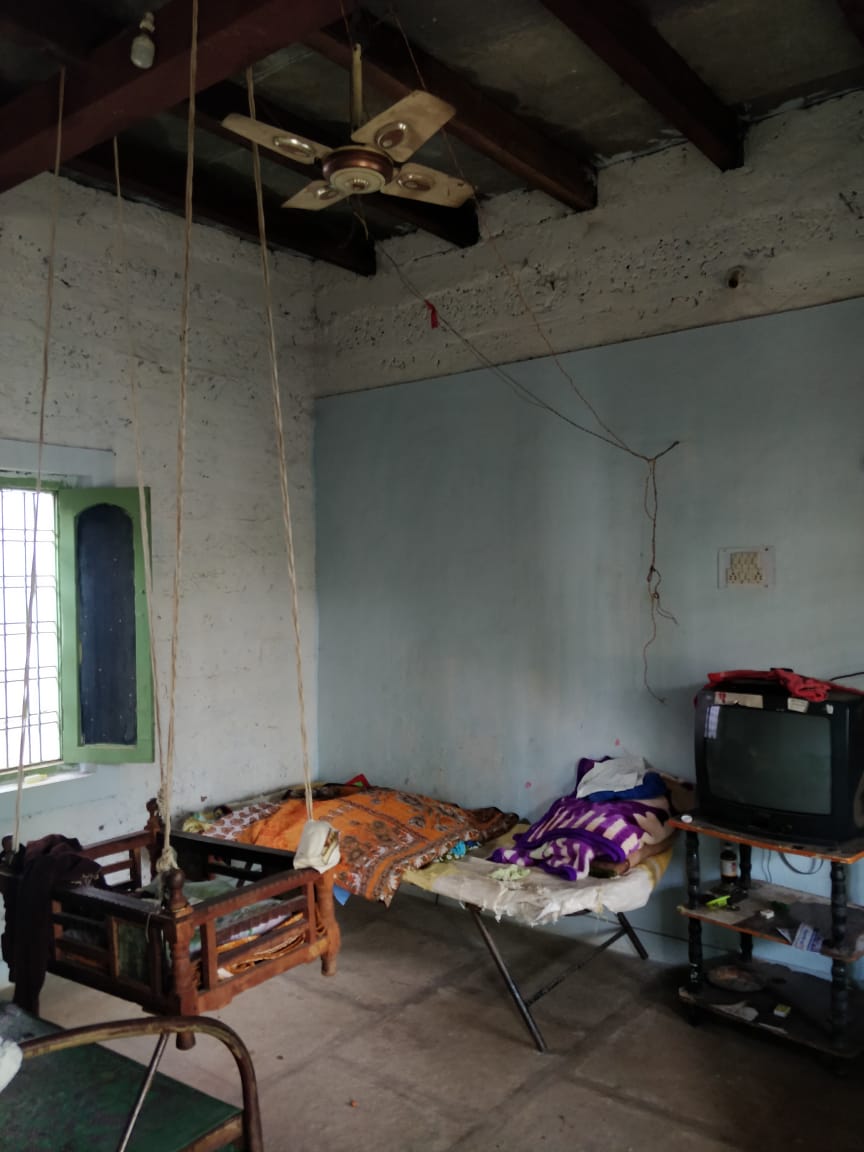Background
Bidar is a hill-top city in north-eastern Karnataka. It has a semi-arid climate with extreme summer, with the highest temperature of 43°C and relative humidity levels of less than 20% in the month of May. Semi-arid climatic zone means low humidity levels in the atmosphere which leads to dryness, respiratory health problems like asthma and other allergies. Higher temperatures can lead to heat stress and lowered productivity. The majority of the community in Amlapur and Gadgi (blocks in the Bidar District) are engaged in agriculture work and daily wage labour for construction. The houses of the communities living in Gadgi and Amlapur are very old with no response to climate or heat stress conditions, made with poorly insulated materials, no windows and fenestrations with high use of inefficient heavy energy consuming luminaries. At a household level, a lot of mechanised cooling measures and humidifiers like air coolers or air conditioners, are not affordable by the communities. Hence, having a naturally thermally comfortable living space becomes a major need for the well-being of the people, living in similar climate zones and having similar socio-economic backgrounds like Bidar.

Efficient Spatial Design
Optimised with north facing windows, shading of south facade, reducing solar heat gain from east and west directions, cross ventilation

Material and Insulation
Laterite walls, madras terrace roofing and clay pot filler slab allowing for an envelop which reduced heat capture and didn’t allow for heating of buildings.

Design of Fenestrations
Large and shaded windows with ventilators to bring in cool breeze and natural light, and exhaust heat

Energy Resilient
Critical lights, fan and water heater powered by decentralised solar energy, resulting in reduced electricity bills and improving access to reliable and clean energy

Rain Water Harvesting
An independent toilet was added to the new house with a water connection. However, it was important to plan for the regular supply of water in order for the household to continue using the toilet. Being an semi-arid, drought prone region, the households also opted for rain water harvesting, allowing them to store water captured during the monsoon seasons for the 3-4 months in summer when water access becomes a challenge
Learnings
Pre Intervention scenario
Rehana was one of the first few households in the region who opted to take a loan for an energy efficient and sustainable house. The house was completed in September 2019. Rehana lives with her husband and three children along with 7 other extended family members who reside with her. In their older house, the roof was made of tandoor stones which are locally available cheap materials that trap a lot of heat. The walls and flooring were made of mud which were completely damaged and would leak during the monsoons. There was no lighting or ventilation and the front of the house was completely open. They had no toilet or water piping in the house.
"We are able to live comfortably indoors which was very difficult for us before. We are a lot of members at home who are all stuck together at the same time but it is nice and cool inside. We are able to open our windows also in the day. We were happy and comfortable enough even during lockdown days."
Rehana
Owner of an Energy Efficient and Sustainable Home
Impact
Cooler Temperatures Previous summers, the family would all be engaged in various activities outdoors as well as the children spending most of the day in school. The house used to heat up, causing Rehana to spend most of her day in the shade outdoors doing her work. Now the entire family is spending their days at home in the peak summer. From +6°C, they are very comfortable with a variance of -4°C from outdoor air temperature.
Rainwater Harvesting and Independent Toilet: Earlier, the family would have to walk far and practice open defecation near the village school on a hill. It was very inconvenient for the elders as they would find it difficult to walk and climb. Now the family has their own independent toilet with rainwater harvesting providing storage for 1 month. During water shortage (usually in the month of May), the family would have had to collect water from community water points
Unaffected by Powercuts: There have been frequent power cuts in the region, which the family is unaffected by as they have solar powered lights and fans at home.
